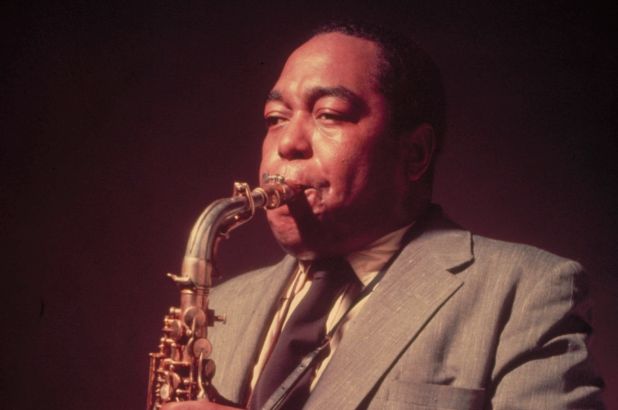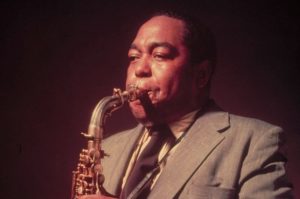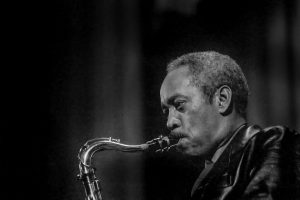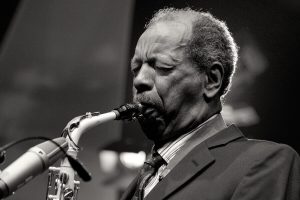Best Alto Saxophone Players Of All Time
One of the most distinctive instruments in the world is the saxophone. It is one of the hardest instruments to master since it combines aspects of both woodwind and brass instruments.
The saxophone comes in a variety of variations that are equally important in solos and ensembles, unlike many other woodwind instruments.
The saxophone will always be associated with jazz and be the first instrument that many people think of when they think of the genre. Many of the best jazz records and ensembles have been performed by a select group of the most well-known jazz saxophonists in music history.
Not to add that they frequently excel at jazz-style improvisation, innovation, and language-changing.
These musicians have established careers playing this powerful instrument.
5 Best Alto Saxophone Players Of All Time
1. Charlie Parker
Ranking first on our list of best alto saxophone players of all time is the father of bebop is Charlie Parker, widely known as “The Bird,” who invented the saxophone and several other instruments. the instigator, the inventor, or the creator.
He is without a doubt one of the greatest musical minds of the 20th century, and his playing would still sound modern if he were living today.
Ironically, a lot of musicians who came after him were compared to Charlie Parker, even though Bird’s playing is still unequaled.
Tad Dameron’s “Hot House,” a contraction, was played by him during one of his live performances. It is a bebop melody over the chord changes of the Cole Porter song “What Is This Thing Called Love.”
The approach is absurd. He was distinctive due to the effectiveness of his finger movements and the shape of his fingers. None of the other fingers move when he plays the palm-sized keys.
Now on display at the Smithsonian Museum of Black American Culture is his play on his King Super 20 alto.
To produce a certain sound, he pressed the Eb palm key on the middle D. For those of you playing Charlie Parker transcriptions from the Omnibook, this might make some passages simpler.
2. Cannonball Adderley
The direction Cannonball is going is different. Although there is still a connection to Charlie Parker’s bebop style, he has a highly unique sound with a lot of edge.
He used a King Super 20 and a NY Meyer alto saxophone. You can tell he was very soulful if you’ve seen him perform because of the powerful swing feel he gives off with his eighth notes and the style that would ultimately become known as soul jazz. still very much a part of bebop.
His emphony is amazing. He doesn’t put in as many mouthpieces and has his bottom lip rolled in quite a bit.
He is one of the greatest alto saxophone players of all time, regardless of style. I could spend all day listening to Cannonball. Check out his solo albums and collaborations with Miles Davis.
3. Sonny Stitt
Given that he has released renowned recordings on both the alto and tenor sax, Sonny Stitt stands out a bit on this list.
Because he began playing in the early 1940s, with Charlie Parker serving as a significant early influence, he has been included based on his alto half. However, it would be misleading to say that he was a “clone” of the famous alto saxophonist; as drummer Kenny Clarke put it, “even if there had not been a Bird, there would have been a Sonny Stitt.”
Early in his career, the saxophonist collaborated with fellow bebop legends like Dizzy Gillespie, Eddie “Lockjaw” Davis, and Dexter Gordon. He continued to tour and record nonstop until six weeks before his death in 1982.
In our comprehensive guide to Sonny Stitt here, we took on the unpleasant task of selecting 5 essentials from his more than 100 recordings.
New York Jazz is a pivotal Sonny Stitt album.
It was created by Norman Granz and featured a lethal rhythm section with Jo Jones playing the drums, Ray Brown playing the bass, and Jimmy Jones playing the piano.
With blazing solos and high-octane renditions of jazz stalwarts like Twelfth Street Rag and I Know That You Know, Stitt’s bebop stylings are on full show here.
In spite of the Parker parallels, his playing is original, creative, and distinctly his own. The medium-tempo arrangements of the jazz standards “Alone Together” and “Between The Deep Blue Sea And The Devil” provide the listener with yet another fascinating glimpse into his hard-swinging, blues-influenced style.
4. Johnny Hodges
American alto saxophonist Cornelius “Johnny” Hodges is best remembered for his solo performances with Duke Ellington’s big ensemble.
For many years, he was the lead alto in the saxophone section. Hodges also played soprano saxophone, but after 1946, he refused to play it. He is regarded as one of the greatest alto saxophonists to ever play in the big band period.
Johnny Hodges, who spent nearly his entire career (1928–1970) playing lead alto with the Duke Ellington Orchestra, is renowned for his expressive vocal tone, wide vibrato, and enormous bends.
Numerous songs and arrangements by Ellington featured Hodges’ distinctive alto tone as a soloist. I really like how they did “I’ve Got it Bad.”
He carefully opens the E palm key to get the lengthy bend.
5. Ornette Coleman
The jazz community was astonished by Coleman’s quartet’s debut performance in New York in 1959 as part of a much debated tenure at the Five Spot.
Ornette abandoned traditional chord progressions and frameworks with his new free jazz stylings, utilizing a technique known as “time-no-changes.” In his music, he has also made veiled allusions to the concept of “harmolodics.”
Coleman was a highly unusual and self-taught saxophonist.
Even if he wasn’t as adept at tearing through chord changes as Stan Getz or Sonny Stitt, for instance, he nonetheless made contributions to jazz history that few others could match. Charles Mingus and Miles Davis were only a couple of his well-known detractors.
Ornette Coleman’s recording The Shape of Jazz to Come is a significant one.
Although Ornette Coleman has a vast and brilliant repertoire, this recording from 1959 is unquestionably his best work. It includes several of his most famous songs, such as “Lonely Woman” and “Peace.”
His alto playing is rough but unquestionably lyrical and influenced by the blues, and he has a completely distinctive voice. Don Cherry, Ornette’s most significant working partner, can be heard on cornet.











